Using the data compiled from the RX V3 thermal testing I have compiled the following tables in an attempt to show other ways of how the performance varies against itself at the flow rates and fan speeds tested. Let’s first look at the raw W/10DT data we will be using:
We can then use this data to show percentage gains relative to a reference point. It’s an interesting way to show gains/losses while changing a variable. This first table shows performance gain or loss relative to 1.0GPM flow rate:
This shows that increasing flow to 1.5GPM has little gain while lowering flow to 0.5GPM does affect performance more.
We can also focus on 1300RPM as our reference and see how much gain or loss in performance we get by changing fan speed:
As expected the change is dramatic. Lastly we can combine both and choose 1300 RPM and 1.0 GPM as our reference point to show both effects concurrently:
So from the data above we can get a very good idea of how the RX360 radiator performs relative to itself. But there is a large selection of 360mm radiator models to choose from, released from numerous manufacturers. So, we need to start comparing performance between them. To see how the radiator performed against the other radiators in this group I have included the averaged flow rate comparison charts from the Round Up. We know that the flow rate has little impact on thermal performance so averaging of the 3 flow rate results gives us a good look at head to head performance at the rpm speeds tested at with even less error.
First let’s start off with the push only data:
At 750RPM the RX v3 starts off in third place. An excellent result. Let’s see how things go at 1300RPM:
At 1300RPM the RX v3 is already dropping down a few places. It seems that it’s sweet spot may be at RPMs even lower than 750RPM.
Again at 1850RPM the trend continues and the RX v3 is now in the middle of the pack.
Push/Pull should only be worse:
10th place at 750RPM seems like it will be the RX’s best result in push/pull.
At 1300 RPM the RX v3 doesn’t perform as well, however it’s still holding in the middle of the pack. Things could certainly be worse.
At 1850RPM the RX v3 holds on to it’s placement.
From all of these results we can create a “master performance factor”. The radiator with the best cooling ability (W/10ΔT) at each gpm/rpm combo was awarded a score of 100, and each other radiators W/10ΔT result was scored as percentage of the top performer:
It’s clear that this radiator does it’s best at low air speeds and high flow.
All these percentage scores were averaged giving us the Averaged Performance Factor of each radiator. This way of looking at the comparison takes away any advantages that a radiator may have at higher or lower fan speeds and looks at an overall average. While this appears fair it does tend to favor those radiators that are all rounders and those radiators which do very well at high RPM. Most users should be more focused on their specific use case. Check in the Round Up for performance comparisons at every gpm/rpm combo for even more details and cross comparison results.
First let’s start with the averaged push only results:
Despite the RX v3 being tuned for really low fan speeds it still scores quite well simply because it doesn’t fall off a cliff at higher fan speeds. A score of 92.2 puts it in 7th place – very respectable.
For push/pull of course things are worse and the RX drops to 14th place. The thing to note however is that the older RX v2 beats it on both metrics.
Next up – Summary!








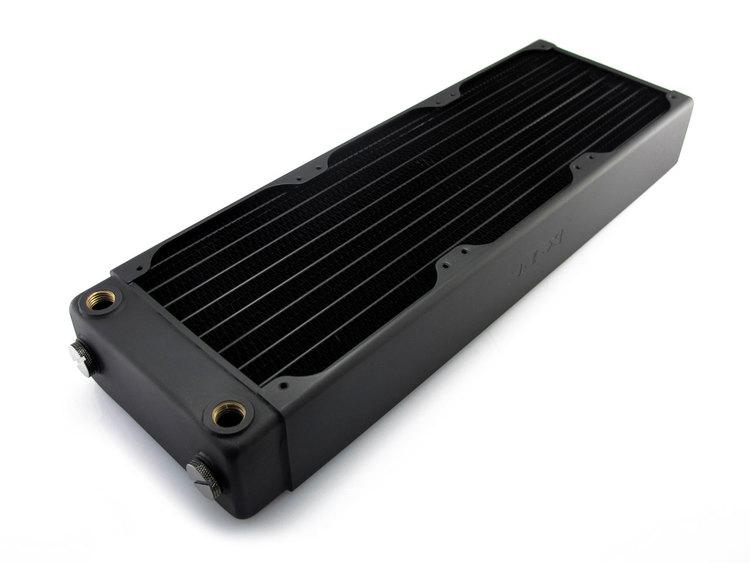
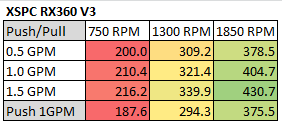
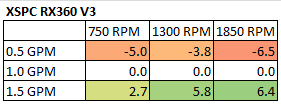
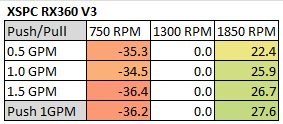
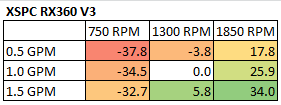
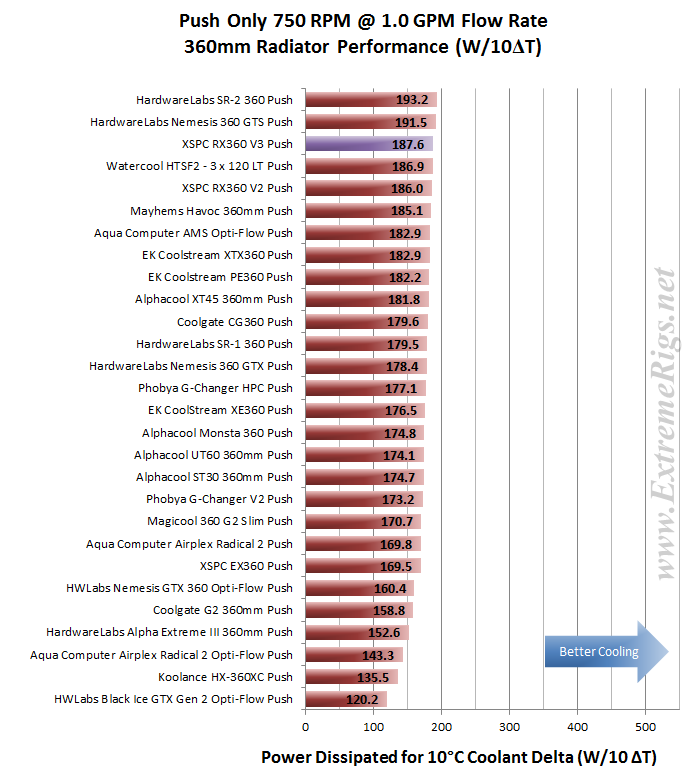
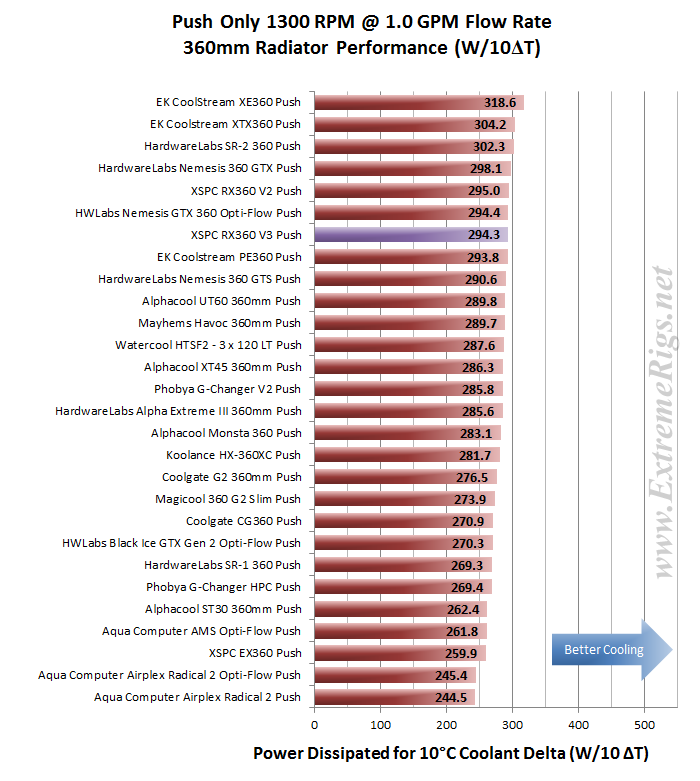
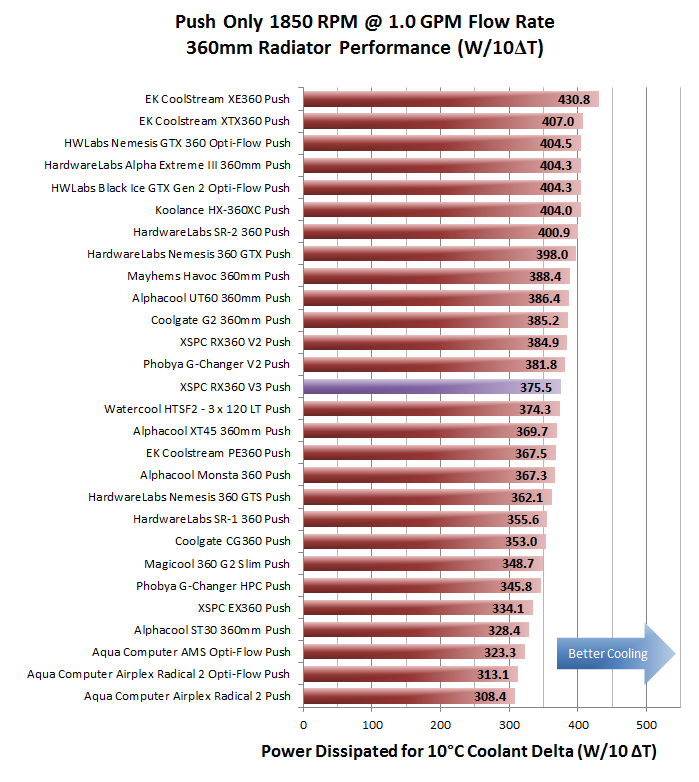
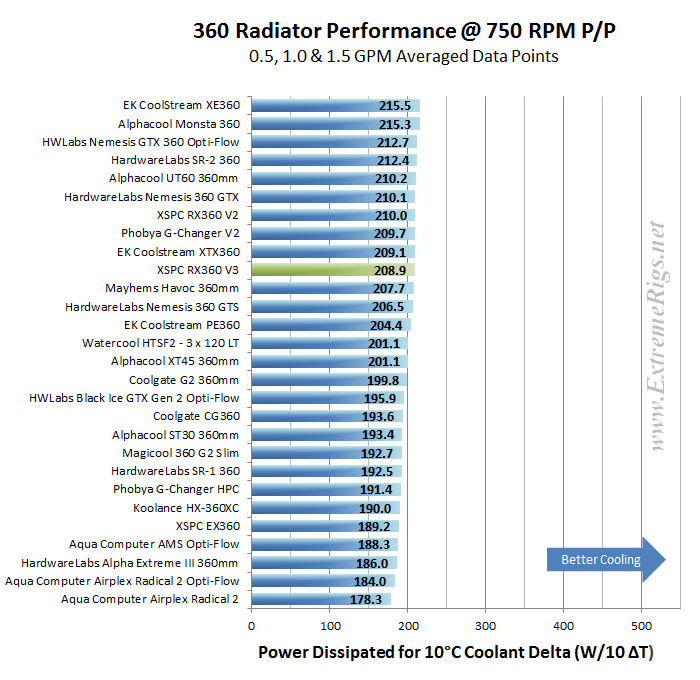
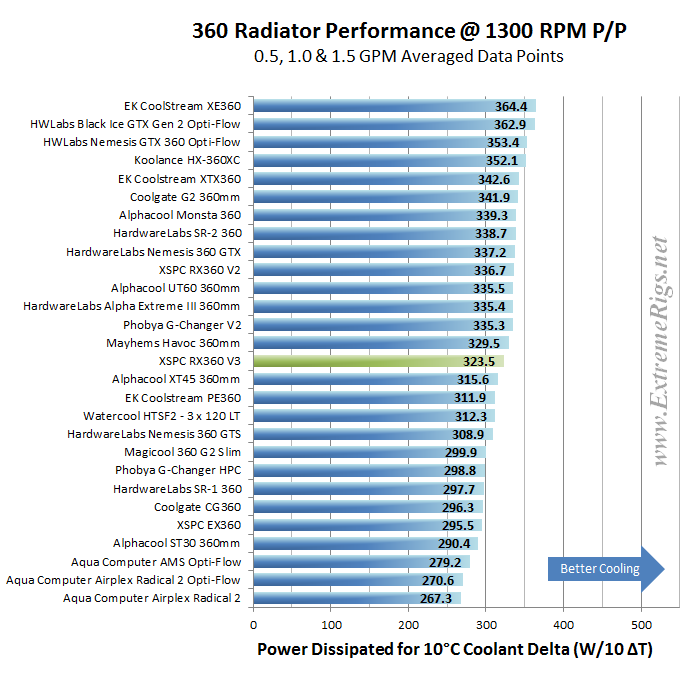
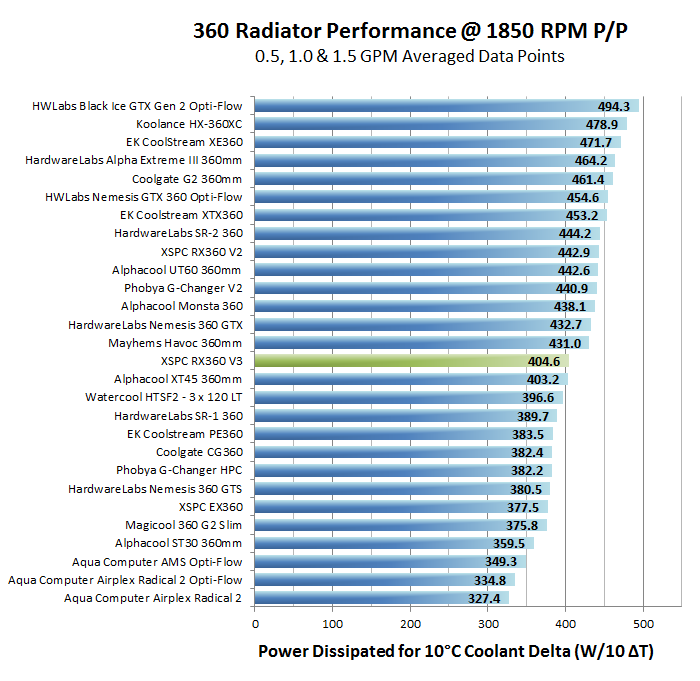
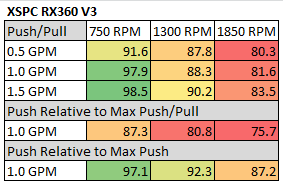
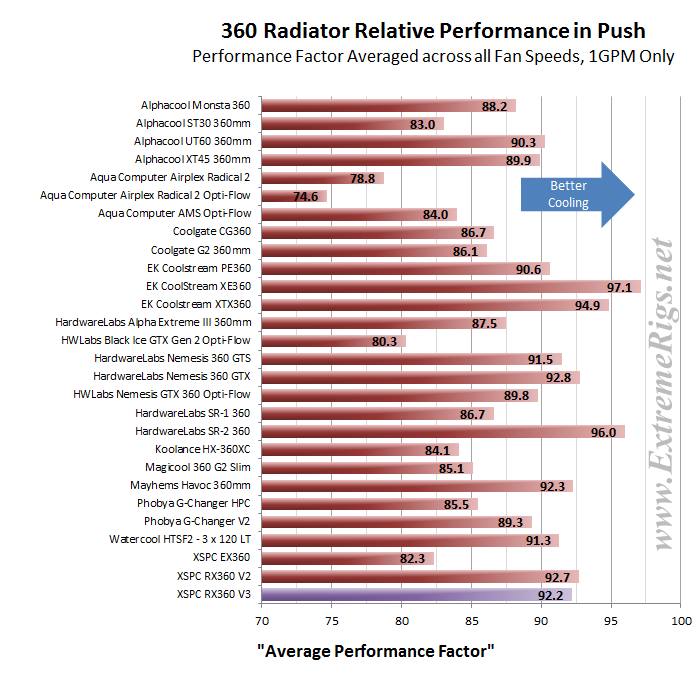
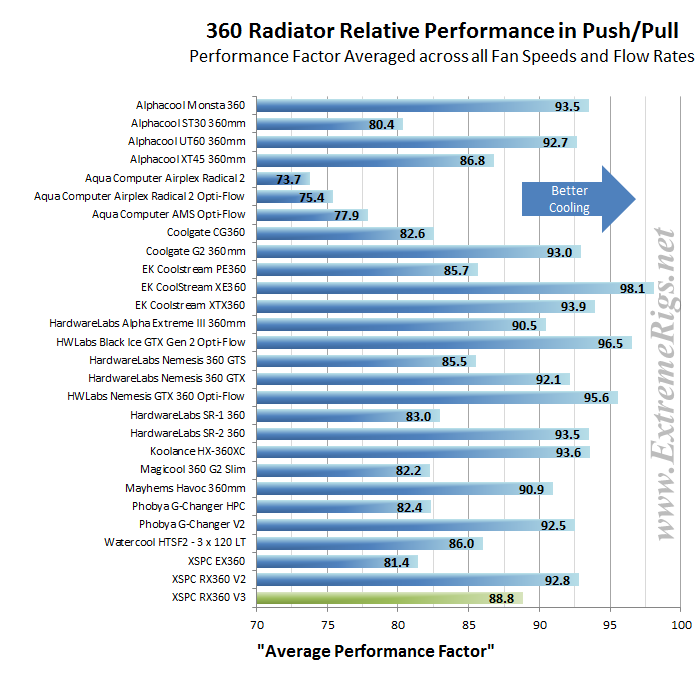




[…] Alphacool UT60 360 Radiator Alphacool XT45 360 Radiator Coolgate G2 360 Radiator EK PE 360 Radiator Hardware Labs Alpha Extreme III 360 Radiator Hardware Labs Nemesis GTS 360 Radiator Hardware Labs Nemesis GTX 360 Radiator Hardware Labs SR-1 360 Radiator Koolance HX-360XC 360 Radiator Magicool G2 Slim 360 Radiator Mayhem’s Havoc 360 Radiator Phobya G-Changer V2 Full Copper 360 Radiator Watercool HTSF2 3×120 LT 360 Radiator XSPC EX 360 Radiator XSPC RX v3 360 Radiator […]
Comments are closed.